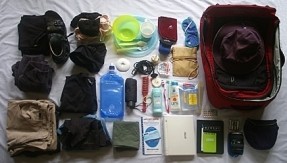Tasmania Travel tips and Tourist information guide via IRTOURING
Tasmania is promoted as the natural state and the “island of inspiration.  owing to its large and relatively unspoiled natural environment. Almost 37% of Tasmania lies in reserves, national parks and World Heritage Sites.The island is 364 kilometres (226 mi) long from northernmost to southernmost points, and 306 kilometres (190 mi) from west to east.
The state capital and largest city is Hobart, which encompasses the local government areas of City of Hobart, City of Glenorchy, and City of Clarence, while the satellite town of Kingston (part of the Municipality of Kingborough) is generally included in the Greater Hobart area. Other major population centres include Launceston in the north and Devonport and Burnie in the northwest.
The subantarctic Macquarie Island is also under the administration of the state, as part of the Huon Valley Council local government area.
The state is named after Dutch explorer Abel Tasman, who made the first reported European sighting of the island on 24 November 1642. He named the island Anthony van Diemen’s Land after his sponsor Anthony van Diemen, the Governor of the Dutch East Indies. The name was later shortened to Van Diemen’s Land by the British. It was officially renamed in honour of its first European discoverer on 1 January 1856.”Tassie” is a colloquial expression for the state, used for example in advertising for the Bass Strait ferry, Spirit of Tasmania
The first reported sighting of Tasmania by a European was on 24 November 1642, by the Dutch explorer Abel Tasman. Tasman landed at today’s Blackman’s Bay. In 1773 Tobias Furneaux was the first Englishman to land in Tasmania at Adventure Bay. A French expedition led by Marc-Joseph Marion du Fresne also landed at Blackman’s Bay in 1772. Captain James Cook landed at Adventure Bay in 1777 – with young William Bligh aboard. William Bligh returned in 1788 (H.M.S. Bounty) and again in 1792 (H.M.S Providence, with young Matthew Flinders aboard. Numerous other Europeans made landfalls, adding a colourful array to the names of topographical features. Matthew Flinders and George Bass first proved Tasmania to be an island in 1798-99.
The first settling of Tasmania was by the British at Risdon Cove on the eastern bank of the Derwent estuary in 1803, by a small party sent from Sydney, under Lt. John Bowen for the purpose of preventing the French from claiming the island. An alternative settlement was established by Captain David Collins 5 kilometres (3.1 mi) to the south in 1804 in Sullivan’s Cove on the western side of the Derwent, where fresh water was more plentiful. The latter settlement became known as Hobart Town or Hobarton, later shortened to Hobart, after the British Colonial Secretary of the time, Lord Hobart. The settlement at Risdon was later abandoned.
The early settlers were mostly convicts and their military guards, with the task of developing agriculture and other industries. Numerous other convict-based settlements were made in Van Diemen’s Land, including secondary prisons, such as the particularly harsh penal colonies at Port Arthur in the southeast and Macquarie Harbour on the West Coast. In the fifty years from 1803 to 1853 around 75,000 convicts were transported to Tasmania.
Van Diemen’s Land was proclaimed a separate colony from New South Wales, with its own judicial establishment and Legislative Council, on 3 December 1825
